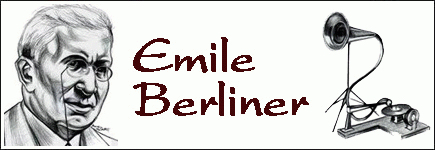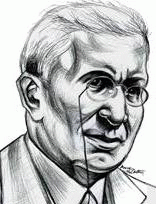Emile Berliner
Emile Berliner was born May 20, 1951 in Hanover, Germany. Berliner later immigrated to Washington, D.C. at the age of 19. He studied at the Cooper Institute (now Cooper Union), worked as an assistant in a chemistry lab, and sold dry goods to support himself. Within six years, he had re-invented the telephone and invented the gramophone, making both suitable for mass production.
At the age of 25, Berliner invented a carbon microphone transmitter for use in the telephone recently invented and demonstrated to the public by Alexander Graham Bell. He immediately sold the rights to Bell Telephone Company, which only then was able to mass market the device. Later, Berliner began to work on a method of sound recording superior to Thomas Edison's cylinder. In 1887, he developed a method for mapping out sounds in a spiraling, wavering groove etched into a flat disk (first of glass, then of zinc, then of plastic). The sounds were "read" by a needle, which transmitted the pattern of vibrations to a diaphragm, which then reproduced the original sounds. Berliner sold the rights to his "Gramophone" (patent #372,786) to the Victor Talking Machine Company (later RCA), thereby providing them with their first major product.

Berliner's innovations eventually made the phonograph and telephone standard household items rather than exotic products of the laboratory. He also invented what was probably the first radial aircraft engine (1908), a helicopter (1919), and acoustical tiles (1920s). In 1911, he established a fellowship in his mother's name for the promotion of women in scientific research. Berliner's legacy also lives on in his trademark (later adopted by RCA): a picture of a dog listening to "his master's voice" issued from a gramophone.
Berliner died August 3, 1929 in Washington, D.C., U.S.


